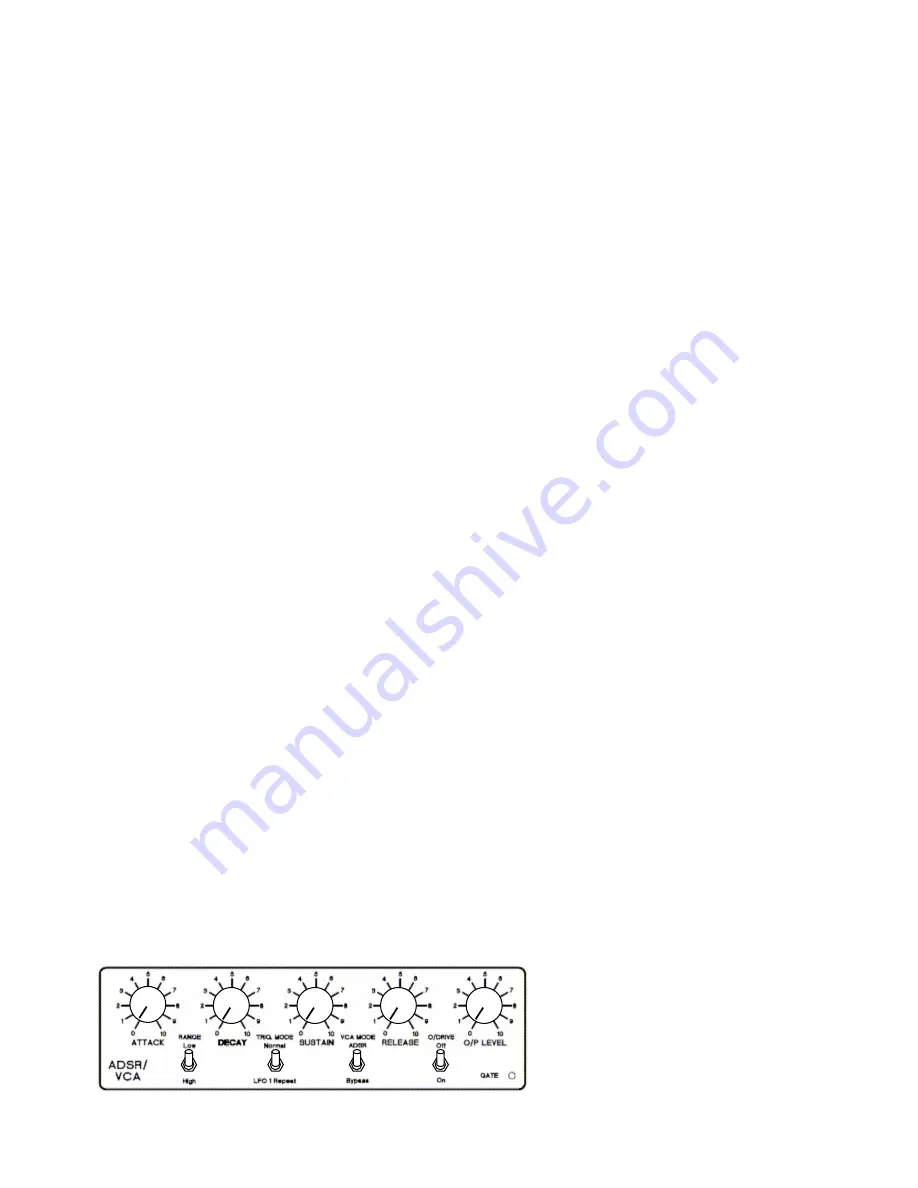
TRAX RetroWave Owner’s Manual
< 20 >
to be processed by the VCF, ADSR and VCA modules. For example, an autowah effect could be set up
by setting the VCA MODE switch to Bypass, turning the VCF RESONANCE control to near oscillation,
and modulating the filter with a slow triangle wave from LFO 2.
Modulation Sources
This part of the filter is also a mixer, but instead of audio, the various control voltages required by the
filter are summed, giving a composite voltage for controlling the cutoff frequency.
ADSR SWEEP
This control is used to apply the one-shot ADSR waveform to the filter CV input each
time a note is played.
The level control can be set to give either a positive or negative filter sweep. Positive sweeps will impart
a contour to the filtering that follows the same path as the VCA contour, producing a change in timbre as
the note is sounded, in addition to a change in the audio envelope. The characteristic synthesizer “wah”
effect is produced using this feature, and the effect is particularly pronounced with the filter
RESONANCE control set to just before oscillation point.
Negative sweeps will apply the inverse contour, which is great for obtaining subtle tonal changes as a
note is played. Varying the ADSR controls has a great effect on the sounds produced, as does the depth
of sweep applied.
LFO 2
The triangle and square waveforms (and their shape variations) produced by LFO 2 can be
applied in varying amounts to the filter.
With the Resonance control set near to oscillation point, and a low frequency triangle selected, “auto-
wah” is produced. Rapid “bubbling” effects are obtained when a high frequency is applied. Square waves
give a choppy modulation that can be used for special effects.
When the Resonance control is near its fully anti-clockwise position, the effect is similar to amplitude
modulation or tremolo, although it is the timbre that is being modulated rather than the amplitude.
SAMPLE & HOLD
The random voltages produced by the S & H circuit can be applied in varying
amounts, to alter the cutoff frequency in an interesting, unpredictable way.
The effect is most noticeable with the RESONANCE control near or at oscillation setting, and is
particularly effective with white noise.
VELOCITY
The control signal available from this pot is taken from the MIDI/CV converter, and is derived
from MIDI velocity information encoded by the transmitting instrument. It is a voltage that varies from 0 to
+10V, but the control can be used to attenuate it to lower levels if desired. The effect is to alter the filter
cutoff frequency, according to the transmitted velocity value of each note.
ADSR & Voltage-Controlled Amplifier (VCA)
ADSR stands for Attack, Decay, Sustain, and Release. Sometimes known as an
envelope generator
,
this module has a dramatic effect on the final shape of a sound.
Each time a note is played, a gate
signal is sent to the ADSR to trigger it.
On receipt of the gate signal, the ADSR
sends out a one-shot sequence of
control voltages to the VCA (Voltage-
Controlled Amplifier). The VCA’s output































